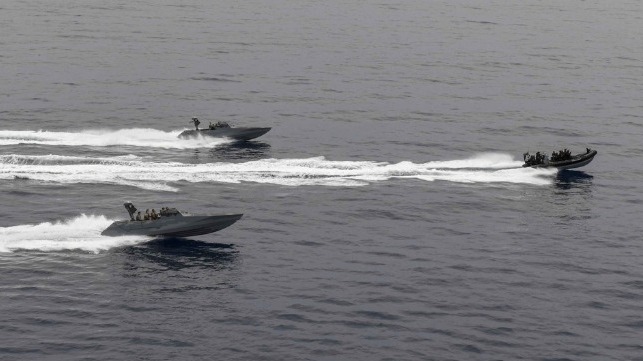UK MCA Warns of the Risk of Injury From Vibration on Small Craft

The UK Maritime and Coastguard Agency has released new guidance on reducing the risk of injury from vibration and shock on high-speed boats, like interceptor RIBs and small patrol vessels.
Whole body vibration (WBV) and repeated shock (RS) injuries are a known hazard for passengers and crewmembers on small high-speed vessels, especially in rough surface conditions. These injuries can be life-changing or even fatal.
“Without the proper mitigation of vibration and shocks, workers on small vessels are at risk of chronic injury at low levels, and severe shocks can cause life-changing injuries to crew and passengers," said Julie Carlton, head of seafarer safety and health for UK Maritime Services. “This guidance is an important update to the safety precautions, to take on board the technology now available that could help."
The MCA's guidance focuses on risk-reduction strategies, and it follows from several serious incidents in recent years. The latest update reflects evolving knowledge and best practices, including the use of shock mitigating technology and data.
Severe WBV and RS incidents have occurred on inland waters and estuaries as well as at sea. Recently-reported injuries include spinal compression injuries, serious damage to joints and fractures in the leg and feet.
According to the MCA, the current research suggests that there is no single vessel design or seating system that is guaranteed to mitigate all the effects of WBV. However, the guidance outlines some basic principles which could assist in reducing risk. Recommendations for vessel design and occupancy include:
- The person at the helm will be naturally inclined to adjust the speed to a level that ensures their own comfort. Moving the cockpit towards the bow, where the vertical impact from waves is strongest, will expose the helmsman is to the greatest forces. This means that the helmsman will calibrate speed to minimize the worst effects felt on board, and the passengers and crewmembers seated behind them will experience a lower level of impact.
- Many operators are considering mechanical suspension seating or other energy-attenuating designs. As the performance of suspension seats varies greatly, industry testing standards are being developed. An unsuitable suspension seat may increase rather than reduce exposures.
- For the helmsman, a power assisted steering wheel and “fly by wire” throttles may result in unstable handholds. In waves this can result in reduced vessel control. Throttles with a solid heel-of-hand support can provide stability.
- If a person is out of their seat in wave conditions, then the helmsman should consider reducing speed or stopping to minimize vessel motions. Briefing or training on movement around deck may be appropriate.
- An upright posture, with the spine in a natural "S" shape, should be maintained while facing in the direction of travel. Sitting or standing sideways can increase the stress on the spine and raise the risk of injury.
- Older adults may be at greater risk as they may be less mobile, and their bones can be more brittle. Persons that have certain medical conditions, such as osteoporosis, may be more likely to be injured.
